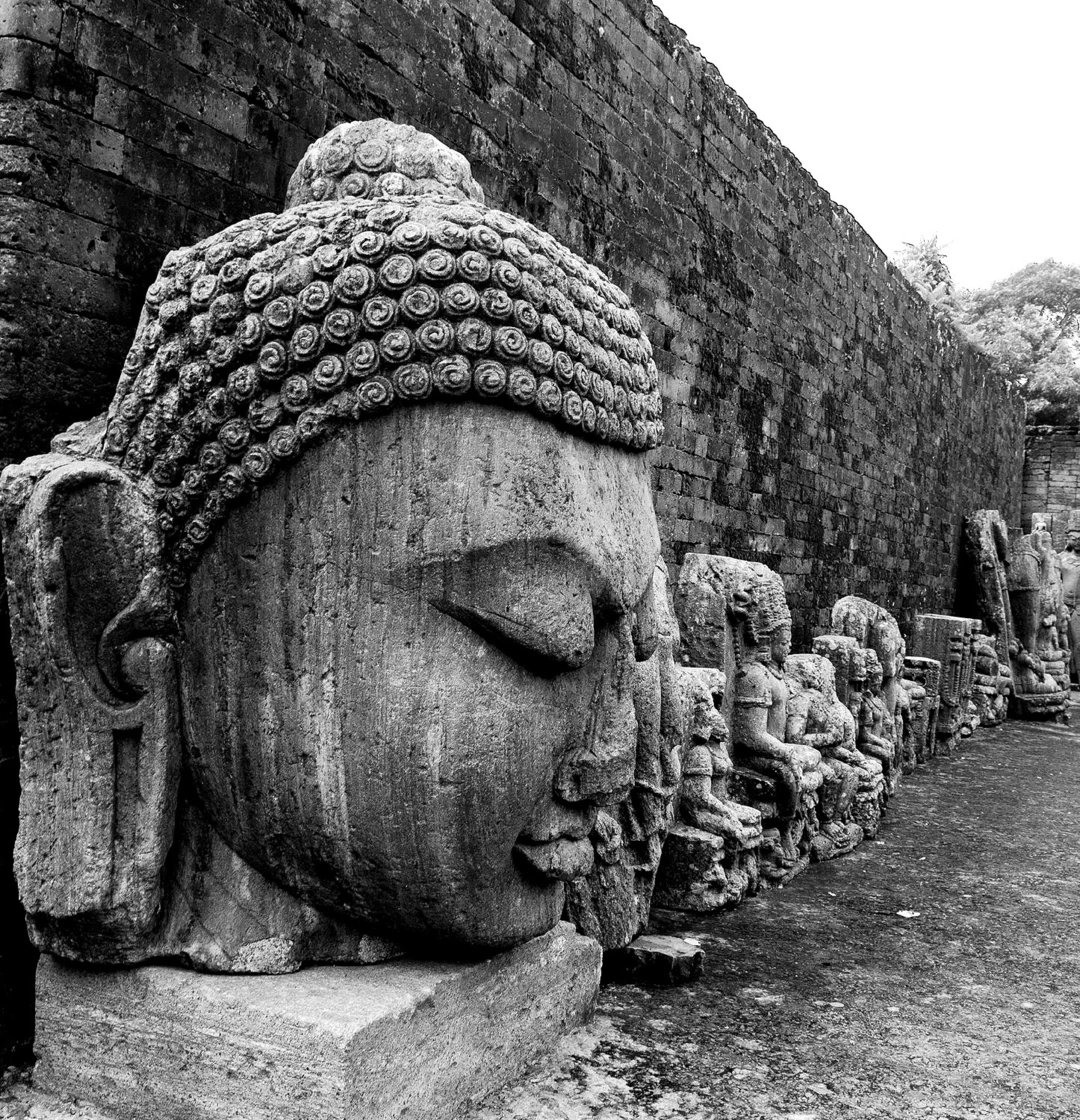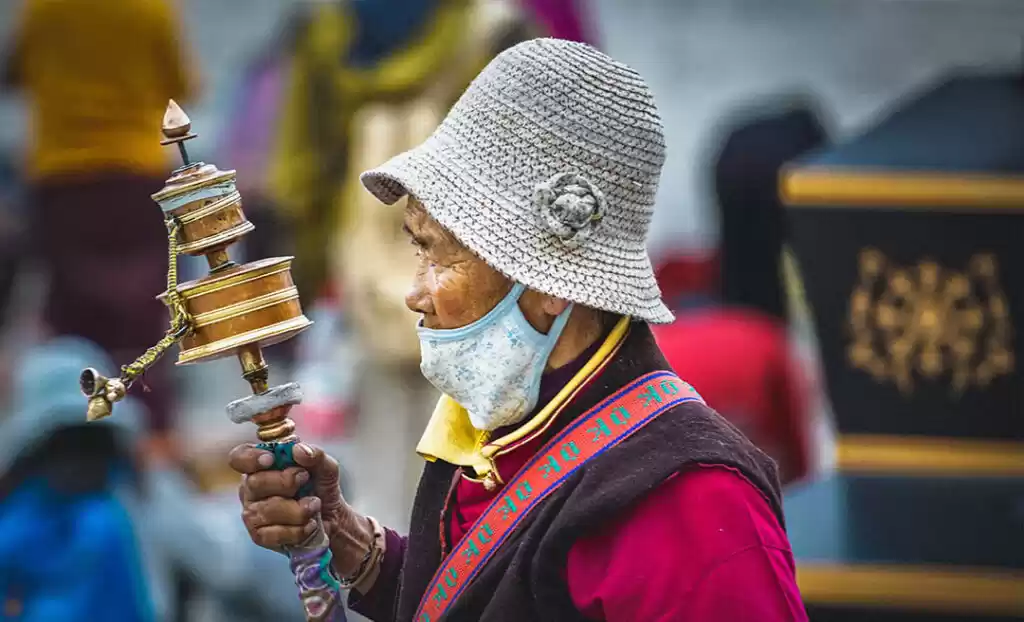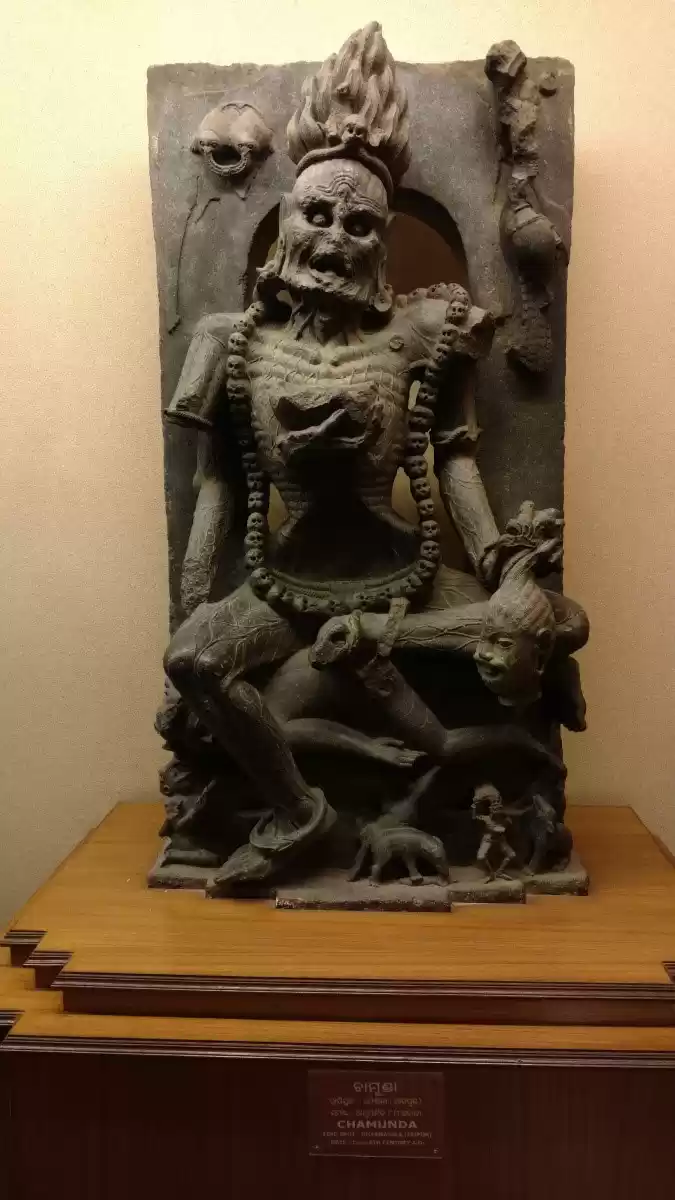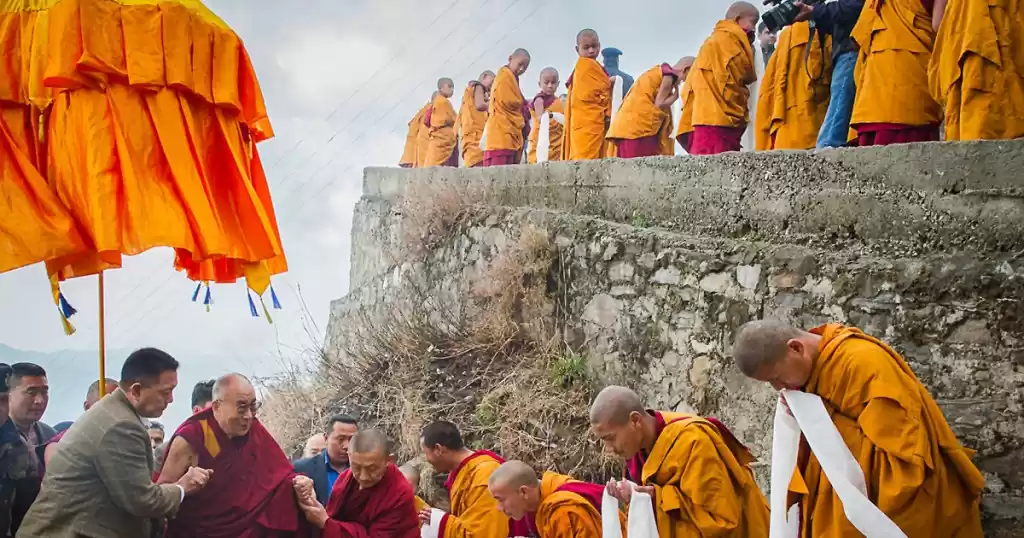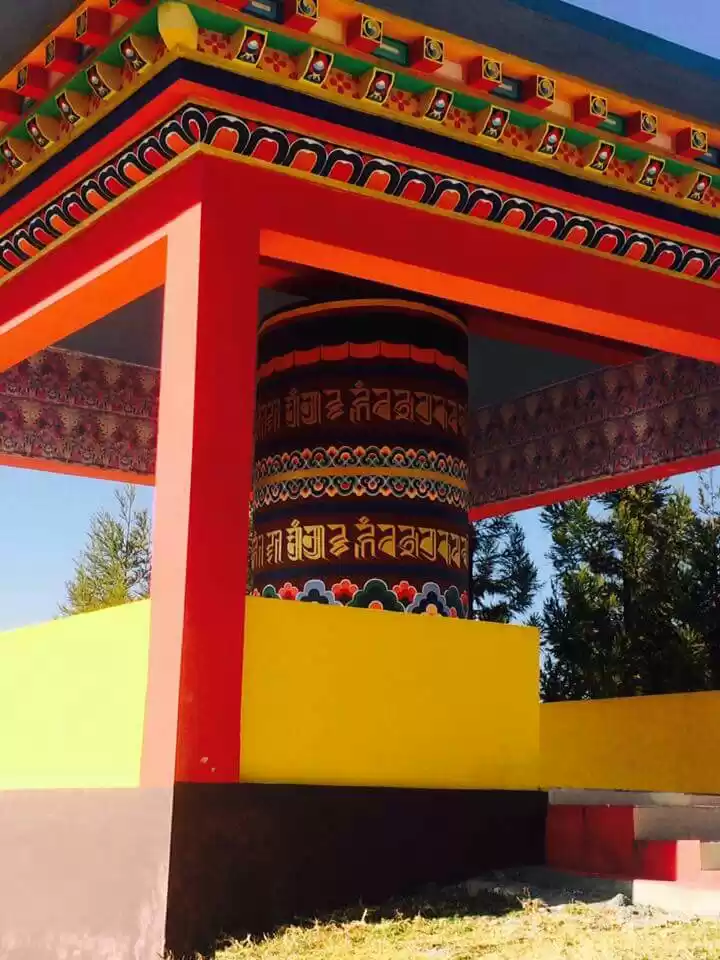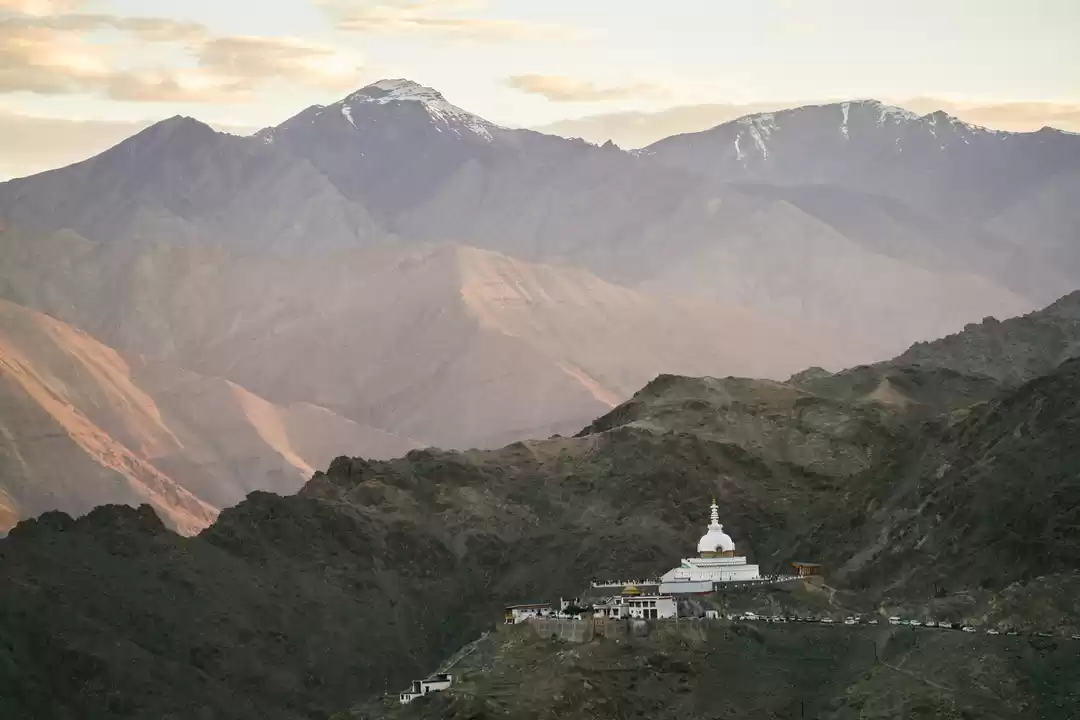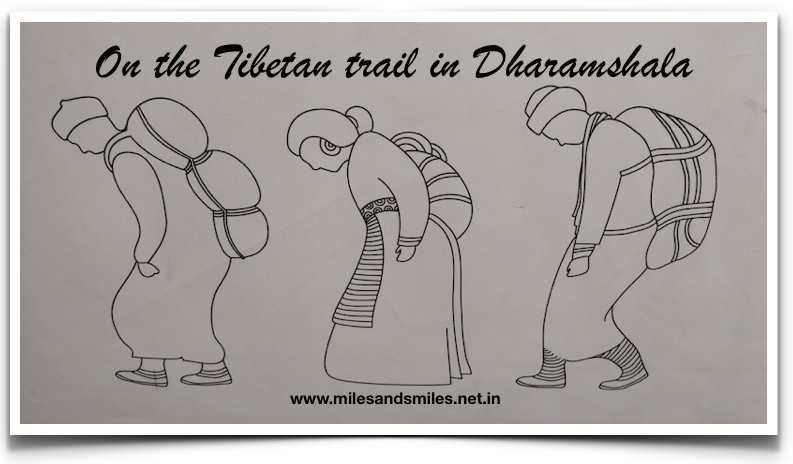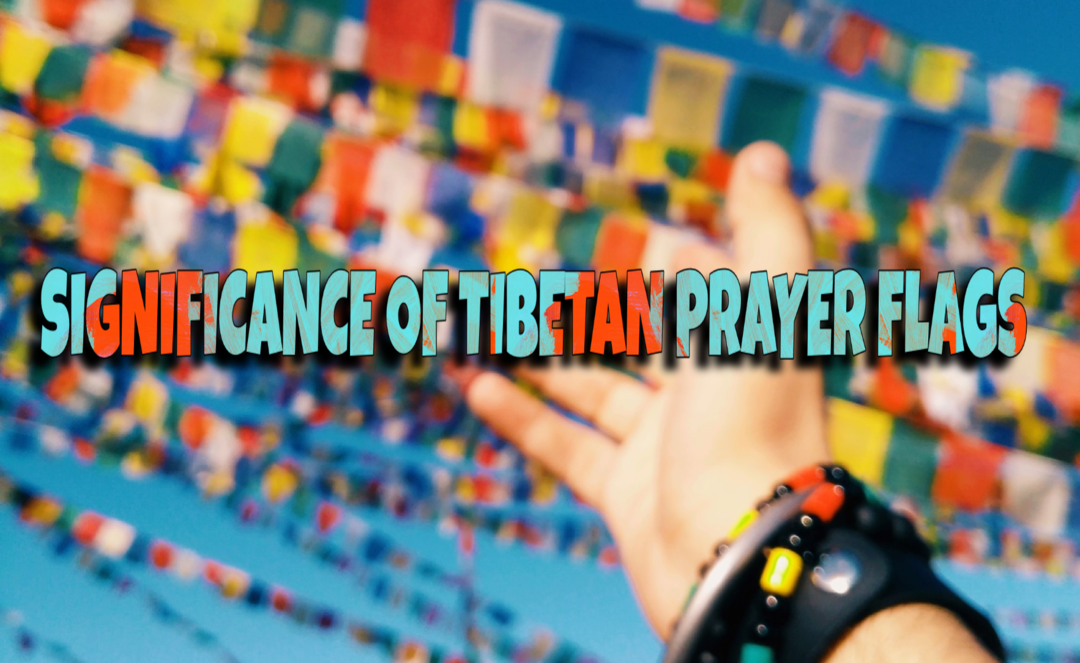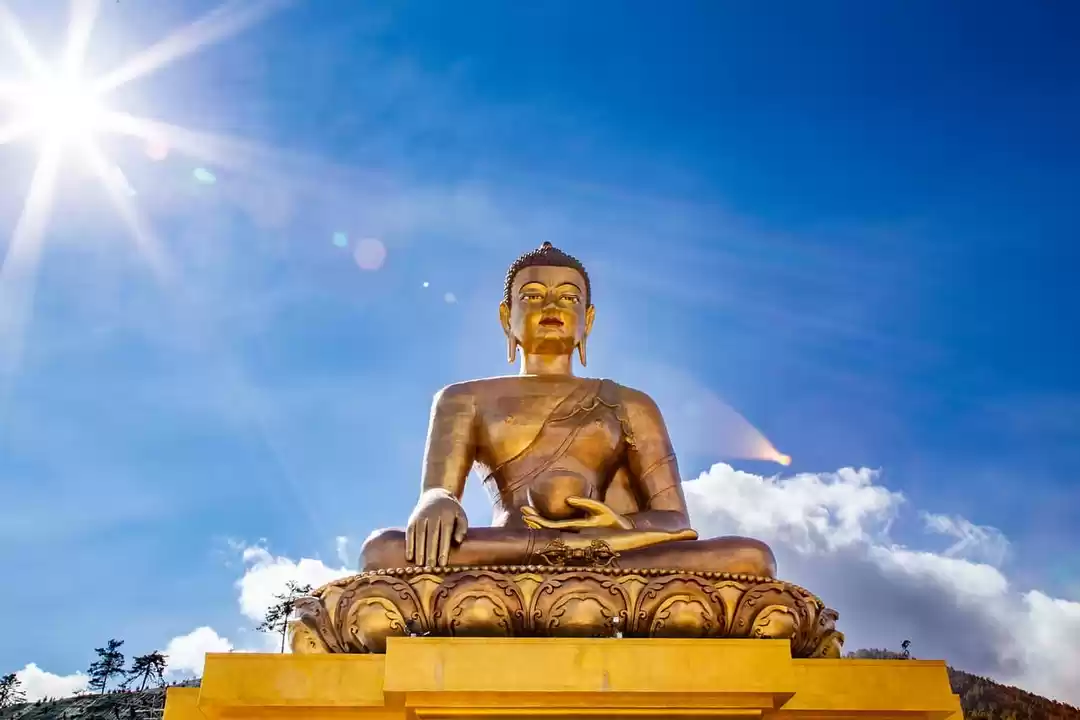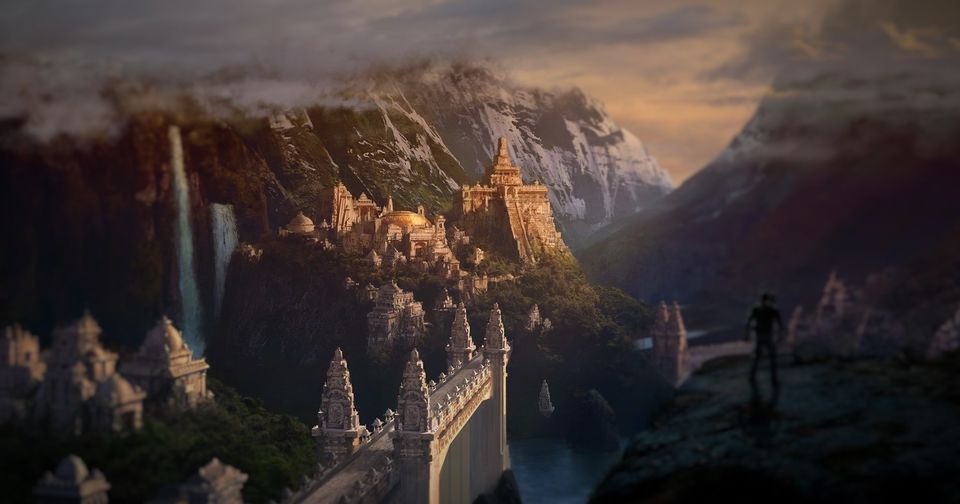
Shambhala is a Sanskrit term meaning "place of peace/tranquillity/happiness." Shakyamuni Buddha is said to have taught the Kalachakra tantra at the request of King Suchandra of Shambhala; the teachings are also said to be preserved there. Shambhala is believed to be a society where all the inhabitants are enlightened, actually a Buddhist "Pure Land," centered in a capital city called Kalapa. An alternative view associates Shambhala with the real empire of Sriwijaya where Buddhist master Atisha studied under Dharmakirti from whom he received the Kalachakra initiation.
Shambhala is ruled over by a line of Kings known as Kulika, or Kalki Kings (Tib. Rigden), who uphold the integrity of the Kalachakra tantra. Tibetan Buddhism prophesizes that when the world declines into war and greed, and all is lost, the twenty-fifth Kalki king will emerge from Shambhala with a huge army to vanquish "Dark Forces" and usher in a worldwide Golden Age. Using calculations from the Kalachakra Tantra, scholars such as Alex Berzin put this date at 2424 C.E.
One of these Kalki Kings, named Rigdan Tagpa (c. 159 B.C.E.), allegedly ruled over a kingdom of 300,510 followers of the Mlechha (Yavana or "western") religion, some of whom worshiped the sun. He is said to have expelled all the heretics from his dominions but later, after hearing their petitions, allowed them to return. For their benefit, and the benefit of all living beings, he explained the Kalachakra teachings. In 59 B.C.E., he abdicated his throne to his son, Puṇdaŕika, and died soon afterward, entering the Sambhoga-káya of Buddhahood.

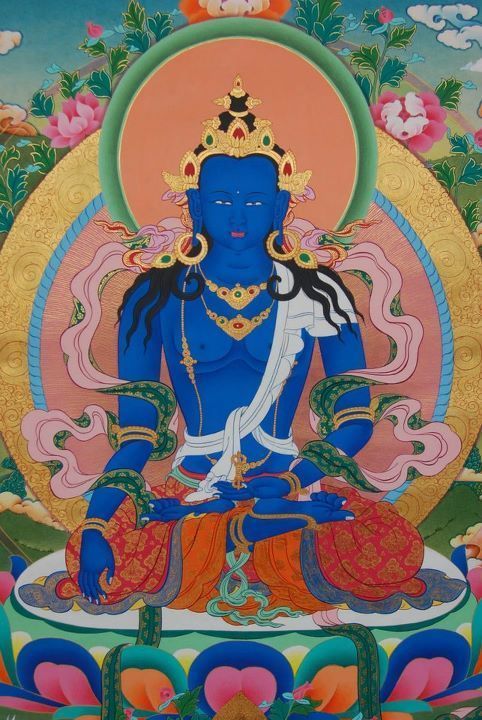

As with many concepts in the Kalachakra Tantra, the idea of Shambhala is said to have an "outer," "inner,' and "alternative" meaning. The outer meaning understands Shambhala to exist as a physical place, although only individuals with the appropriate karma can reach it and experience it as such. The inner and alternative meanings refer to more subtle understandings of what Shambhala represents in terms of one's own body and mind (inner), and the meditation practice (alternative). These two types of symbolic explanations are generally passed on orally from teacher to student.
In modern times, Chögyam Trungpa, founder of Shambhala International, taught that the Shambhala kingdom is seen as an enlightened society that people of all faiths can aspire to and realize. The path to this is provocatively described as the practice of warriorship—meeting fear and transcending aggression, and of "secular sacredness"—joining the wisdom of the past and one's own culture with the present in nowness.
Trungpa's Shambhala teachings have inspired numerous educational, artistic, and spiritual institutions, including Naropa University, Shambhala Training, Shambhala Sun, Miksang photography, The Shambhala School, Shambhala Buddhism, Shambhala Prison Community, Peacemaker Institute, and many others.
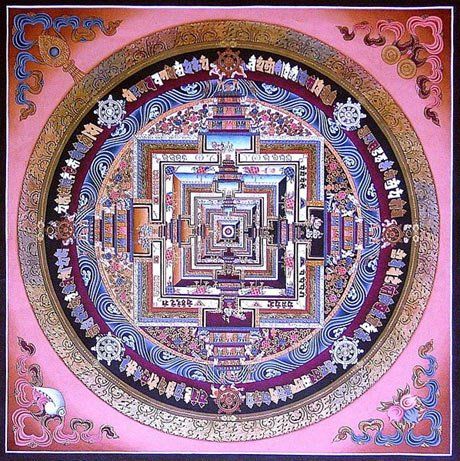
The Western fascination with Shambhala has often been based upon fragmented accounts of the Kalachakra tradition, or outright fabrications. Tibet was largely closed to outsiders until very recently, and so what information was available about the tradition of Shambhala was haphazard at best.
The first information that reached western civilization about Shambhala came from the Portuguese Catholic missionaries João Cabral and Estêvão Cacella who had heard about Shambala (which they transcribed as "Xembala") and thought it was another name for Cathay or China. In 1627, they headed to Tashilhunpo, the seat of the Panchen Lama and, discovering their mistake, returned to India
The Hungarian scholar Sàndor Körösi Csoma, writing in 1833, provided the first geographic account of "a fabulous country in the north...situated between 45' and 50' north latitude."
During the nineteenth century, Theosophical Society founder Helena P. Blavatsky alluded to the Shambhala myth, giving it currency for Western occult enthusiasts. Later esoteric writers further emphasized and elaborated on the concept of a hidden land inhabited by a hidden mystic brotherhood whose members labor for the good of humanity.
Over many centuries, numerous explorers and seekers of spiritual wisdom have embarked on expeditions and quests in search of the mythical paradise of Shambhala, and while many have claimed to have been there, no one has yet provided any evidence of its existence or been able to pinpoint its physical location on a map, however, most references place Shambhala in the mountainous regions of Eurasia.
Ancient Zhang Zhung texts identify Shambhala with the Sutlej Valley in Punjab or Himachal Pradesh, India. Mongolians identify Shambhala with certain valleys of southern Siberia.
In Altai folklore, Mount Belukha is believed to be the gateway to Shambhala. Modern Buddhist scholars seem to conclude that Shambhala is located in the higher reaches of the Himalayas in what is now called the Dhauladhar Mountains around Mcleodganj. Some legends say that the entrance to Shambhala is hidden inside a remote, abandoned monastery in Tibet, and guarded by beings known as the Shambhala Guardians.
For some, the fact that Shambhala has never been found has a very simple explanation – many believe that Shambhala lies on the very edge of physical reality, as a bridge connecting this world to one beyond it.

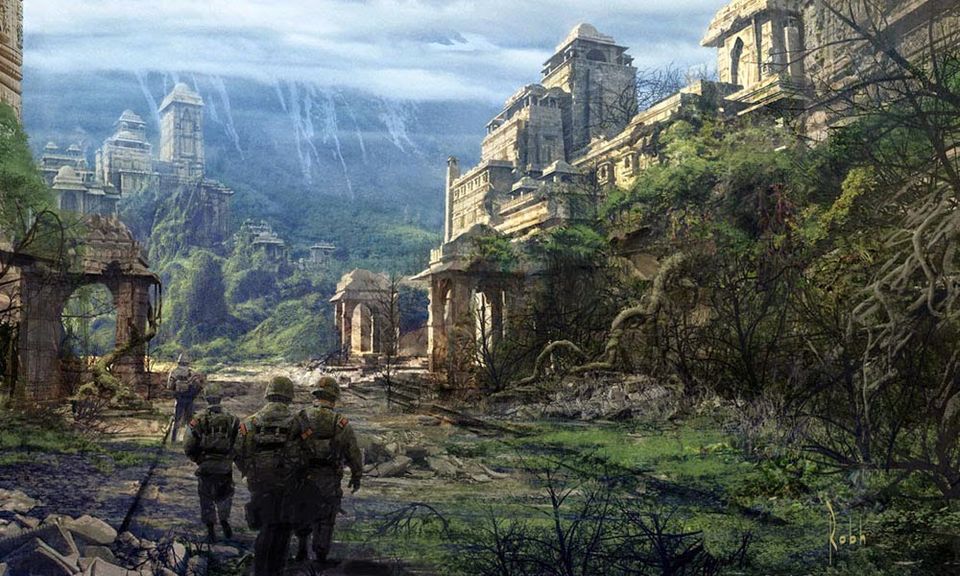
REF:-
WIKIPEDIA,ANCIENT ORIGIN, GOOGLE IMAGES, PINTEREST
















